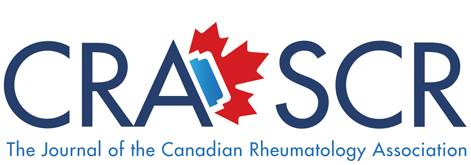Spring 2025 (Volume 35, Number 1)
CPD for the Busy Rheumatologist
Learning Beyond the Mini-Practice Audit Model (mPAM): What Do I Do Next?
By Raheem B. Kherani, BSc (Pharm), MD, FRCPC, MHPE; Elizabeth M. Wooster, M.Ed, PhD(c); and Douglas L. Wooster, MD, FRCSC, FACS, DFSVS, FSVU, RVT, RPVI
Download PDF
“I really have been able to see a positive impact on my practice. I now have been able to review guidelines and actually make a difference in the care of my patients,” reflects Dr. AKI Joint, a rheumatologist member of the Canadian Rheumatology Association (CRA). “My cardiovascular care for my systemic lupus erythematosus (SLE) patients has improved. Each time I have done an audit, I have seen improvements. In the first audit, I realized that I was not documenting the lipid results consistently. In the second audit, I identified improved documentation of this aspect of patient care.”
The mini-Practice Audit Model (mPAM) and other audits facilitate the opportunity to apply guidelines to our own practice, learn from the application and continue to enhance the delivery of care. Implementing the use of the mPAM audit and re-audit every 3-6 months can be instructive and uncover further opportunities to improve care. Dr. AKI Joint could start with one or two aspects of a guideline, to make this intervention more valuable and impact a change in clinical practice.
The use of mPAMs leads to opportunities for self-reflection, which can stimulate participation in other types of learning (as outlined by the Royal College Maintenance of Certification (MOC) Program (https://www.royalcollege.ca/en/cpd/moc-program/moc-framework)), such as group learning (MOC Section 1), individual learning (MOC Section 2), and through further feedback and improvement (MOC Section 3). This may lead to exploring relationships with colleagues, including other specialists who can assist in the discussion of cases, as well as providing coaching or mentoring in the support of others. Dr. AKI Joint could consider using clinical case rounds as a venue to enhance practice. By encouraging one another, collaborative resources can be identified for reading, research and practice improvement.
“I have now seen that not only is the initial audit helpful for my patients,” says Dr. AKI Joint, “ but re-auditing allows me to learn about my practice and implement systematic changes to enhance patient care through a continuous cycle of quality improvement. I am going to share my findings by presenting the improvements at our hospital medical rounds and will also submit my audit approach for the CRA Practice Reflection Award (https://rheum.ca/awards/practice-reflection-award/).”
Raheem B. Kherani, BSc (Pharm), MD, FRCPC, MHPE
CRA Education Committee Past Chair,
Program Director and Clinical Associate Professor,
University of British Columbia
Director, Intensive Collaborative Arthritis Program,
Mary Pack Arthritis Program
Clinician Investigator, Arthritis Research Canada
Division Head, Rheumatology, Richmond Hospital
Rheumatologist, West Coast Rheumatology Associates
Elizabeth M. Wooster B.Comm, M.Ed, PhD(c)
OISE/University of Toronto
Research Associate,
School of Medicine, Toronto Metropolitan University
Douglas L. Wooster, MD, FRCSC, FACS, DFSVS, FSVU, RVT, RPVI
Professor of Surgery,
Temerty Faculty of Medicine, University of Toronto
Clinical Professor,
School of Medicine, Toronto Metropolitan University
Selected References:
1. Esposito P, and Dal Canton A. “Clinical audit, a valuable tool to improve quality of care: General methodology and applications in nephrology.” World J Nephrol. 2014;3(4):249-55. doi:10.5527/wjn.v3.i4.249
2. Wooster D. A Structured Audit Tool of Vascular Ultrasound Interpretation Reports: A Quality Initiative. J Vasc Ultrasound. 2007;31(4):207-10.
3. Koshy K, Limb C, Gundogan B, et al. Reflective practice in health care and how to reflect effectively. Int J Surg Oncol (NY). 2017;2(6):e20 doi:10.1097/IJ9.0000000000000020.
4. Kherani RB, Wooster EM, Wooster DL. MOC Section 3 Credits: These Can Be Easy. CRAJ. Fall 2023;33(3):20.
5. Kherani RB, Wooster EM, Wooster DL. Knowledge Translation: What’s in It for Me? CRAJ. Winter 2023;33(4):22-23.
6. Kherani RB, Wooster EM, Wooster DL. CPD for the Busy Rheumatologist: Mini-Practice Audit Model (mPAM): Overcoming the “Fear” of Chart Audits; CRAJ. Spring 2024;34(2):26-27.
7. Wooster DL, Wooster EM, Kherani RB. CPD for the Busy Rheumatologist: Raising the Bar of the Clinical Audit Spectrum: A Comparison Between the Mini-Practice Audit Model (mPAM) and Other Types of Clinical Audits. CRAJ. Fall 2024;34(3):20.
8. Kherani RB, Wooster EM, Wooster DL. CPD for the Busy Rheumatologist: The Mini-Practice Audit Model (mPAM): a practical guide to analyzing and applying the data. CRAJ. Winter 2024;34(4):22-23.
|




